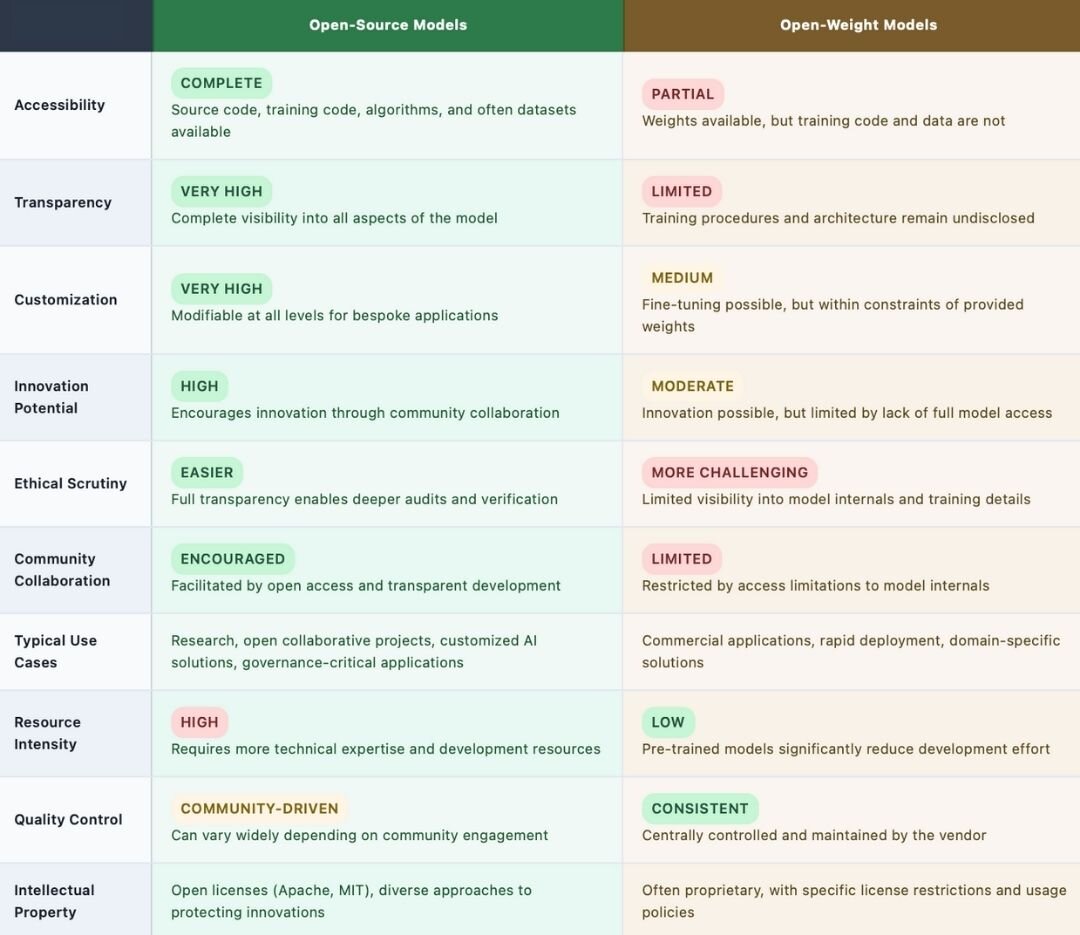What this post is about
- Self-Hosting: difference between Open Source and Open Weights
- Which licensing risks companies often overlook
- Why true open-source AI offers greater long-term security
- How to choose the right model for your organization’s needs
As increasingly powerful language models become widely accessible, more companies are looking for ways to integrate AI into their internal processes securely and in compliance with data protection requirements. In industries that handle sensitive information or operate under strict regulatory frameworks, self-hosting is rapidly moving into focus. Running AI models on your own infrastructure unlocks new possibilities — but it also raises fundamental questions around licensing, governance, and technical responsibility.
Why Local LLMs Are Gaining Traction
Self-hosting primarily means having full control over your data, infrastructure, and model operations. For many organizations — especially in public administration, healthcare, or critical infrastructure — this level of control is essential.
At the same time, midsize companies and start-ups are discovering that self-hosting unlocks a range of practical, day-to-day benefits that go far beyond compliance:
- Data control: Complete oversight of all data flows, with zero risk of third parties accessing or reusing training data.
- Cost control: No surprise price hikes. Operating costs remain predictable over the long term.
- Independence: Freedom from vendor lock-in and API limitations, enabling long-term strategic planning.
- Customizability: Models can be finely tuned for specific use cases without creating new external dependencies.
Self-hosting offers significant advantages — but only if the chosen model genuinely aligns with your organization’s needs.
The Fundamental Distinction: Open Source vs. Open Weights

Self-hosting an LLM doesn’t automatically mean you’re working with free or open software. A range of terms is used in this space, many of which sound similar but come with very different legal and technical implications once you look closer.
Open-source models make all essential components publicly available: the training code, infrastructure, architecture, weights, and detailed documentation of the training data. This level of transparency makes the models fully reproducible and auditable. Companies can understand how the model was built, why it behaves the way it does, and where its limitations may lie — enabling more informed decision-making. While genuinely open-source LLMs remain rare, the first Apache- and MIT-licensed models already demonstrate what this level of openness can look like in practice.
Open-weights models, by contrast, usually publish only the final weights. The training code and datasets remain closed, and their use is often governed by license terms that users must accept before downloading. Meta’s Llama models and many models on Hugging Face fall into this category. They can be cost-effective alternatives to proprietary APIs, but they do not offer the full transparency that true open-source models provide.
For companies, this distinction is crucial: it determines how well a model can be audited, which licensing obligations apply in practice, and how stable the legal framework will be in the long run.
Licensing: Where Most Self-Hosting Risks Originate
Even if model weights are not currently considered copyright-protected under many legal interpretations, they still create binding contractual obligations.
Downloading an open-weights model almost always means accepting the manufacturer’s license — and that license may impose specific requirements. These can include restrictions on commercial use, attribution obligations, or the need to include license information when redistributing the model.
Some providers, such as Meta with Llama, also enforce “Acceptable Use Policies” that may limit fine-tuning or certain applications. Violating these terms can lead to contractual penalties, mandatory data deletion, or claims for damages.
In practice, this means that anyone self-hosting an LLM should fully understand the legal framework governing its use before deployment. Doing so helps avoid misunderstandings and prevents situations where a model must be removed after it is already in production.
The Advantage of True Open-Source AI
True open-source models — as defined by the Open Source Initiative (OSI) — offer more than just access to source code. They provide clear, well-established usage rights. Models released under licenses such as Apache 2.0 or MIT allow nearly unrestricted use, modification, and redistribution without purpose limitations or retroactive prohibitions. For companies, this creates long-term predictability, legal clarity, and straightforward integration into existing governance structures.
A strong current example is Mistral Small 3, a 24-billion-parameter model released under the Apache 2.0 license. With this move, Mistral has taken a firm stance: away from proprietary licensing constraints and toward genuine open-source transparency.
Truly open-source models like Mistral Small 3 are still far less common than open-weights alternatives, and they often require more technical expertise to set up. But for organizations that prioritize control, transparency, and long-term stability, that investment pays off.
How Companies Can Make the Right Choice
Self-hosting doesn’t have to be an all-or-nothing decision. What matters is making a deliberate, well-informed choice:
- Define your requirements: Do you need full transparency and auditability (open source) — or maximum performance and convenience (open weights)?
- Review the license before deployment: A quick check can prevent long-term issues, especially with commercially licensed models.
- Plan your infrastructure strategically: Self-hosting requires GPU capacity, monitoring, update strategies, security measures, and model hardening.
- Choose open source whenever possible: If you have the option, invest in true open-source models. They offer the highest long-term certainty, particularly in regulated industries.
🚀 Our Path to AI in the Helpdesk
How we integrate AI responsibly and and which capabilities are on the way is outlined in our article on Zammad’s AI strategy
Summary
Self-hosting LLMs can give companies greater privacy, cost control, and technical independence. But whether this approach works in the long run depends heavily on choosing the right model, understanding the licensing implications, and establishing solid governance.
These advantages make open-source AI not only a technically sound choice, but also an economically and strategically compelling one — especially for organizations that value data protection, adaptability, and long-term stability.

